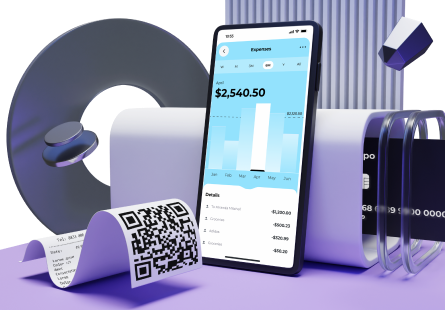Customer experience (CX) is much talked about nowadays, but what does it mean? It’s not the easiest thing to define since it covers many different parts of the customer journey – from customer support to in-person interactions and everything in between. One thing is certain: it matters.
So, what is CX? What is the difference between customer experience and customer service? Why does customer experience matter so much? Read on to find out answers to these and other questions.
What is customer experience (CX)?
Customer experience (CX) is a broad term covering the comprehensive impression a customer has of a brand, which is based on their interactions across various touchpoints. CX involves the emotions and impressions a customer experiences when engaging with your product or service, website, marketing materials, customer support, and other touchpoints, whether digitally or in person. A good customer experience makes things easy, enjoyable, and hassle-free, while a poor customer experience is likely to drive people away.
What is the customer journey?
A customer journey, on the other hand, refers to the customer’s specific progression across touchpoints. Customer journeys may include multiple events that take place before, during, or after a customer experiences your product or service, for instance, onboarding a new customer or resolving a technical issue.
Difference between CX and customer service
While customer experience can be defined as the overall impression your brand leaves across the entire journey, customer service is about answering questions, demonstrating to customers how to use your product, and assisting them with problems. The primary difference between the customer experience and customer service is that the former deals with addressing customer needs during the entire customer journey, while the latter is focused on post-purchase interactions. The concepts are closely interrelated – the way and speed you help customers with issues directly affects the level of customer satisfaction and the overall customer experience.
The next difference is that customer experience doesn’t necessarily involve interaction with a brand’s representative, while customer service does. Also, customer service is a one-time event, and the customer experience captures the essence of the entire customer journey.
Lastly, customer experience and customer service rely on different tools that maximize their value. To design effective customer experience strategies, CX teams utilize a range of tools, including:
- customer relationship management (CRM) solutions to collect and analyze data coming from customer interactions across various channels
- A/B testing tools to determine which messaging best resonates with website users
- dynamic recommendations for other products based on purchase history
Customer service specialists generally use the same tools as customer experience management teams and some other tools more specific to customer service responsibilities:
- web pages where users can find content to navigate them through using products or services correctly and solving issues
- self-service chatbots
- web pages providing ways to reach the company and talk to human agents
- proactive communications asking customers how the products are performing and providing tips on how to use them
Why CX matters
A hassle-free customer experience gives you a competitive edge
When customers engage with a brand, they expect that their needs will be met quickly and without complication. A hassle-free customer experience ensures that every touchpoint – from browsing to checkout – is smooth, efficient, and seamless. When businesses meet or exceed customer expectations, reducing friction and allowing customers to get exactly what they want without unnecessary delays or confusion, they get a competitive advantage in crowded markets where customers have countless options.
A positive customer experience increases customer loyalty and retention
Satisfying customer experiences go a long way toward building customer loyalty – a customer who is happy with the purchase process will likely come back for repeat purchases. Tailored customer experience strategies can substantially increase Customer Lifetime Value (CLV). The more positive customer interactions, the more likely customers are to become your long-term clients.
Rewarding customer experiences drive more revenue
Enhanced loyalty and retention translate to increased cross-sell and up-sell opportunities, leading to greater revenue. Positive customer experience also helps businesses save more by boosting customer retention, as acquiring new customers is costlier than retaining your existing customer base. Moreover, a seamless customer experience encourages existing customers to recommend your brand to other people, resulting in the cost-effective acquisition of new customers.
A strong customer experience builds brand reputation
Customer experiences directly affect customer perceptions of your brand. In addition to boosting brand loyalty and customer retention, positive experiences encourage customers to leave favorable reviews about your brand. This organic promotion helps establish your business as trustworthy and customer-centric. Needless to say, a good reputation creates a sense of reliability that keeps existing customers loyal and helps acquire new clientele.
Examples of excellent customer experience
A positive customer experience is about enabling customers to achieve their goals with minimal effort. Here are some examples of an outstanding customer experience:
- Intuitive website design. A user-friendly, intuitive website makes it easy for customers to navigate and find what they need. A clean layout, clear calls to action, and minimal friction in the buying process create smooth and enjoyable digital interactions, resulting in pleasing customer experiences.
- Consistent digital experiences. Whether customers engage with your brand through your website, mobile app, or social media, a smooth omnichannel experience is crucial. Consistent and seamless integration across all platforms allows customers to switch between channels without missing anything, creating a more cohesive and satisfying experience.
- Realistic expectations about your product or service. Setting clear and honest expectations helps avoid misunderstandings and disappointing customers.
- Being transparent about pricing. Clear, upfront pricing builds customer confidence and prevents a negative customer experience.
- Gathering and acting on customer feedback. By actively listening to customer feedback, businesses can make data-driven improvements, ensure they’re addressing real customer concerns and pain points, and ultimately keep their customers satisfied.
- Accessible self-service solutions. Resources like FAQ pages and community forums allow customers to quickly address issues without contacting support, enhancing customer satisfaction.
- Personalized interactions. Today’s customers expect personalized experiences that make them feel recognized and valued. Relevant product recommendations, tailored emails, or website copy that speaks directly to a customer are all parts of a winning customer experience strategy.
Examples of poor customer experience
On the other hand, a bad customer experience occurs when a business fails to meet customer expectations, which results in a frustrating, inefficient, or unsatisfying customer interaction. Some examples of a bad experience include:
- Limited self-service options. When customers can’t find clear answers through FAQ pages or help centers, they are forced to queue for support, often leading to frustration.
- Long wait times. Whether it’s waiting on hold for customer support or experiencing delays in service, the longer a customer has to wait, the more likely they are to walk away with a negative impression.
- Unhelpful or indifferent customer service. Customers usually reach out for support when they’re experiencing a problem. Agents who seem uninterested or lack empathy can seriously damage customer relationships.
- Ignoring customer feedback. Feedback from customers provides actionable insights that can help improve service and resolve customer pain points. When businesses fail to acknowledge or act on it, they miss the chance to enhance the experience and risk losing customer trust.
- Confusing website navigation. A website that is difficult to navigate, has broken links, or requires too many steps to complete a purchase can frustrate users and drive them away.
- Inconsistent experiences across channels. If a company’s website, mobile app, and in-store service don’t align, customers may feel confused or frustrated when switching between platforms.
- Overcomplicated checkout process. Too many steps, forcing account creation, or not offering preferred payment methods all feed into negative experiences and can make customers abandon their purchases.
Components of CX and how you can measure them
Customer experience (CX) is shaped by every customer interaction. To improve customer experience, you first need to break it down into measurable components.
Main touchpoints identification
Touchpoints are the key moments where customers interact with businesses. They include website visits, customer support inquiries, product purchases, and even social media engagement. Identifying these touchpoints will help you find out where customers are forming opinions and where you can implement improvements. You can measure the effectiveness of customer experience by conducting customer satisfaction (CSAT) surveys at different points in the customer journey.
Customer journey analysis
Mapping out customer journeys provides meaningful insights into how people move from first discovering your brand to making a purchase (and beyond). A detailed journey analysis helps identify where customers face friction or drop-off before converting. Key performance indicators (KPIs) like conversion rates, bounce rates, and time spent on each step of the journey can reveal where customers struggle and what you can do to improve customer experience.
Feedback and perception gathering
Customer feedback is one of the most valuable tools for evaluating customer experience. You can collect insights through surveys, online reviews, and direct customer conversations. Two key methods for analyzing feedback are Net Promoter Score (NPS) and sentiment analysis.
NPS helps measure customer loyalty by gauging how likely customers are to recommend a brand, while customer sentiment analysis tools assess the tone and emotion behind customer interactions. Continuous feedback loops enable businesses to make informed decisions about enhancing the customer experience.
Ways to improve your customer experience
Know your customers
Improving customer experience starts with knowing your audience, i.e., customer demographics, behaviours, and preferences. Analyzing feedback and customer data helps businesses better understand customer behaviour and use these insights when devising their customer experience strategy.
Build an emotional connection
Memorable customer experiences go beyond transactions – they help build relationships since customers remember brands that make them feel valued. Businesses can create emotional connections by showing empathy and offering personalized service. Simple steps like acknowledging a repeat customer or following up on past concerns can make a significant impact.
Shift toward more personalized customer experience
Modern customers expect businesses to recognize their individual needs. Personalization can be as straightforward as addressing customers by name in emails or as advanced as recommending products based on past purchases. Brands that invest in personalization and create tailored experiences are more likely to drive engagement and loyalty.
Improve your employee experience
Happy employees create better customer experiences. Employees who feel valued and are equipped with the right tools are more likely to provide excellent service, proactively respond to issues, and create an exceptional customer experience.
Deliver a consistent experience across channels
Today, people interact with brands across multiple channels – websites, apps, social media, and in-store visits. It’s important that these touchpoints are connected so a customer experiences consistency no matter where they engage. Your steps? Focus on integrating channels, keeping messaging consistent, and providing smooth transitions between platforms.
Frequently asked questions
What is customer experience management (CXM)?
Customer experience management (CXM) is the process of improving every interaction a customer has with a brand. It involves strategies, tools, and practices aimed at delivering a seamless, personalized, and engaging experience across all touchpoints. CXM focuses on understanding customer needs, analyzing feedback, and optimizing processes to build stronger relationships and increase customer satisfaction and loyalty.
How does improved customer experience help brands?
A better customer experience directly benefits brands by increasing customer loyalty, reducing customer churn, and driving higher revenue. Happy customers are more likely to come back, make repeat purchases, and recommend your brand to others. Moreover, a strong CX can set a company apart from competitors and strengthen its reputation.
What are the 5 C’s of customer experience?
The 5 C’s of customer experience are five principles that help businesses create and maintain a strong CX strategy: consistency, convenience, communication, customization, and care.
What is CX design?
CX design (customer experience design) refers to creating interactions that are intuitive, efficient, and enjoyable for customers. The goal of CX design is to reduce friction, improve usability, and make every interaction as smooth and satisfying as possible.
Final thoughts
High-quality customer experience drives customer loyalty, increases retention, boosts brand reputation, and ultimately leads to higher revenue and long-term business success. By investing in CX, companies create stronger relationships with their customers.
A customer-centric company culture goes beyond just customer service; it touches every aspect of the business, including online experiences.
DeepInspire is a boutique software development company with 20+ years of experience in bespoke product development for the fintech sector, spanning custom banking software, trading platforms, digital wallets, personal finance apps, and more. We also offer user experience design services to help you create intuitive, enjoyable, and visually attractive interfaces that positively affect your overall customer experience.







